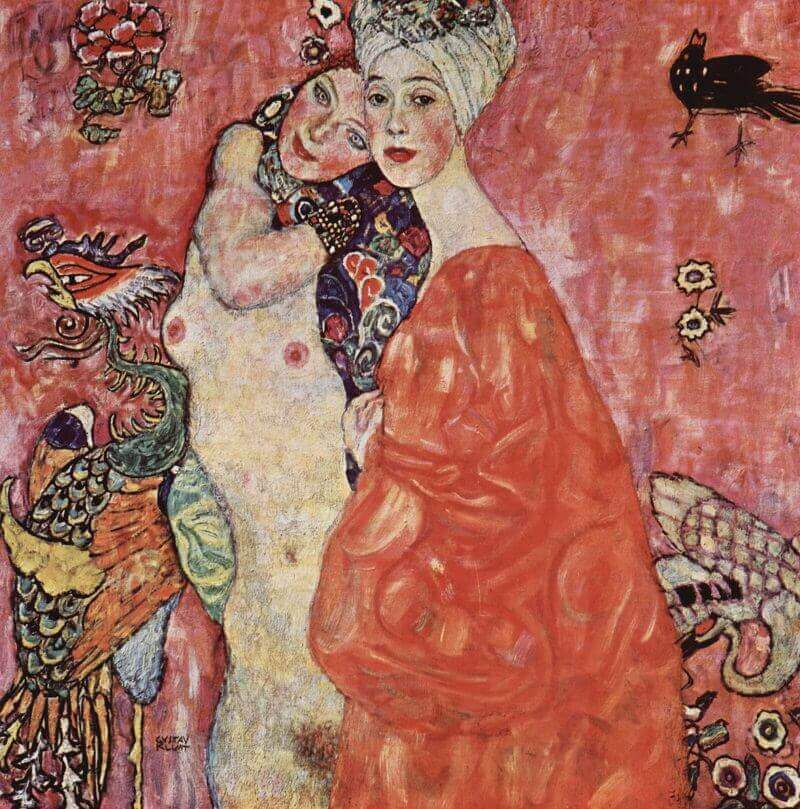The Friends, 1917 by Gustav Klimt

Klimt's appropriation of oriental ornamentation reached its high point around 1917 with such paintings as The Friends. Of course, iconographical borrowing, the mainstay of his earliest
commissions, was not new to the artist, nor was he a stranger to Japanese design. Throughout the mosaic period he had explored ambiguous figure/ground relationships similar to those seen in Japanese
prints, but his nagging fidelity to three-dimensional verisimilitude had always prevented him from achieving total planar unity. In the end, he found his solution not in the linearity of the Japanese
approach (and of his own gold paintings), but rather in a return to lusher, more densely impastoed surfaces. The orange robe, pink wallpaper and rosy flesh of The Friends are all handled with the
same buttery strokes, and by this means, the background motifs acquire a pictorial presence that makes them as "real" as the main subjects. It is impossible to determine whether the women and their
feathered companions occupy the same plane or not. Background becomes foreground and, as a result, foreground background. Like so much of Klimt's late work, the painting is partially about space and the
various illusions that art creates to deal with it.
Thematically, of course, the subject of The Friends was a recapitulation of the lesbian imagery that had recurred in Klimt's work ever since the 1904 Water Serpents.
However, the world in which The Friends dwell seems a much less forbidding place than that of the Water Serpents, and they much less forbidding people. Despite
the surreal spatial qualities of the canvas, it is evident that this couple does not inhabit the watery depths, but lives above ground, breathing real air. Both faces are shown, and they engage the
viewer sympathetically. The feeling between them is less erotic passion than tender affection, and the "unnatural" homosexual union is here given a yin/yang quality of inevitability. This dualism is
expressed both by the physical appearances of the two - one clothed and one naked - and by the birds that flank them. On the left is a fantastic phoenix, symbol of regeneration, while on the right are
the inevitable forces of doom, the raven and the evil, red-eyed swan. The friends thus become symbols of the eternal human predicament, a couple whose situation, far from being anomalous, assumes a
prototypical magnitude.




















